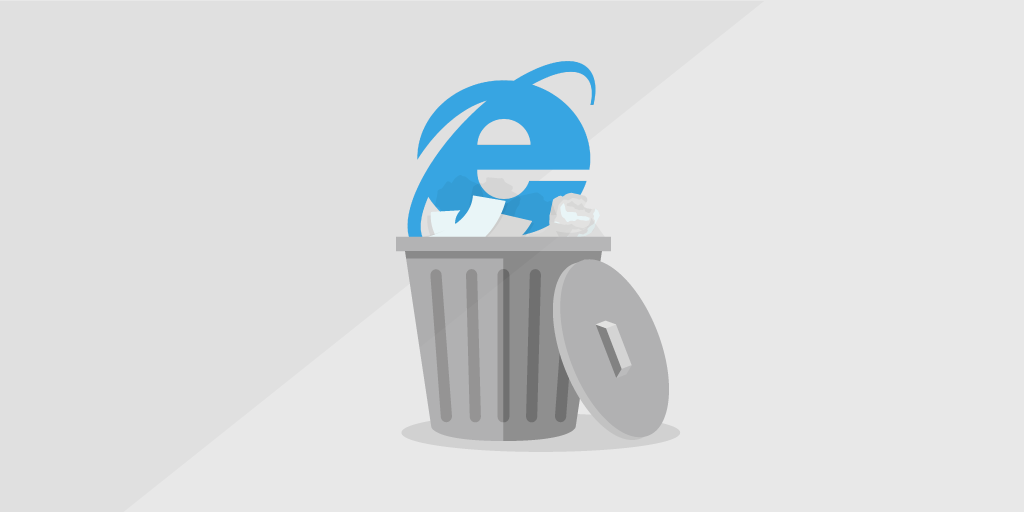
Internet Explorer 11 is going end of life on June 15, 2022. Meaning that for most Windows versions, using Internet Explorer 11 won’t be an option anymore. Microsoft detailed their end-of-life phasing to ease people towards their newer browser including an end of support for Microsoft 365 services on August 17, 2021.
Internet Explorer 11 Desktop Application End of Life
The next step in the IE11 end of life will be the retirement of the Internet Explorer 11 desktop application on most supported Windows 10 versions. This end of life will happen on June 15, 2022.

Microsoft detailed the reasoning behind this decision in their IE11 retirement blog post. Improved compatibility, streamlined productivity, and better browser security are listed as the primary three reasons why Microsoft is finally moving away from Internet Explorer 11, which was introduced in 2013.
Microsoft detailed in their Q&A that the following items will be unaffected by this retirement:
- Internet Explorer mode in Microsoft Edge
- Internet Explorer platform (MSHTML/Trident), including WebOC
- Internet Explorer 11 desktop application on:
- Windows 8.1
- Windows 7 Extended Security Updates (ESU)
- Windows Server SAC (all versions)
- Windows 10 IoT Long-Term Servicing Channel (LTSC) (all versions)
- Windows Server LTSC (all versions)
- Windows 10 client LTSC (all versions)
After June 15, 2022, the Internet Explorer desktop application will be out of support and disabled, automatically redirecting users to Microsoft Edge. Organizations with Internet Explorer websites or apps are encouraged to move over to Internet Explorer mode in Microsoft Edge which will be supported through at least 2029.

Looking at our own data, we can see that over 46% of Windows 10 devices can be affected by the IE11 end-of-life at any point after June 15, 2022.
IE mode in Microsoft Edge will follow the Windows 10 end-of-life dates for their respective versions. Meaning that over time, as the current supported Windows 10 versions go end of life, so will IE mode for Microsoft edge. To help you manage Internet Explorer 11 and its end-of-life better, you can find a report below that provides an overview for each of your devices when Internet Explorer 11 support will end.

If you’re looking for even more options to manage the Internet Explorer 11 end-of-life, we have additional resources in the Internet Explorer 11 end-of-life Pro Tips blog that looks at scanning Internet Explorer 11 usage and scanning the disable Internet Explorer 11 group policy setting.
Microsoft 365 Apps and Services End of Life
Microsoft announced its plan for the end of life of Internet Explorer 11 in 2020. One of the major steps in this process is ending support for the Microsoft 365 apps and services on August 17, 2021.

If you are still using Internet Explorer 11, there will be a few exceptions as listed by Microsoft in their blog post:
- Outlook Web App: Users logging in with AAD accounts will still receive the full OWA experience but will not receive new features beginning August 17, 2021, while users logging in with Microsoft Accounts (MSA) will be redirected to the Outlook Web App Light experience.
- Open with Explorer/View in File Explorer (SharePoint): We understand that some customers may continue to use Open with Explorer and View in File Explorer (only accessible in IE11) to access document libraries. To avoid disruption, these customers will be able to use these features for now when they go to a document library in IE11. These features remain in maintenance mode and aren’t receiving further development. We encourage all customers to move to a modern browser and OneDrive sync for a better user experience and easier access to files. For more information on how to prepare your SharePoint environment for end of support on IE11, please read this Docs article.
Not all other services will be ended immediately. Microsoft lists that “All other apps and services will phase out over weeks and months to ensure a smooth end of support with each app and service phasing out on independent schedules.”. However, details on when which service will specifically be phased out are not available, so it is best to be prepared before August 17.
To prevent issues from occurring, it is best to ensure that users are not using Internet Explorer to access their Microsoft services. One way to check is to get a list of default browsers to ensure nobody uses Internet Explorer as their default browser.



